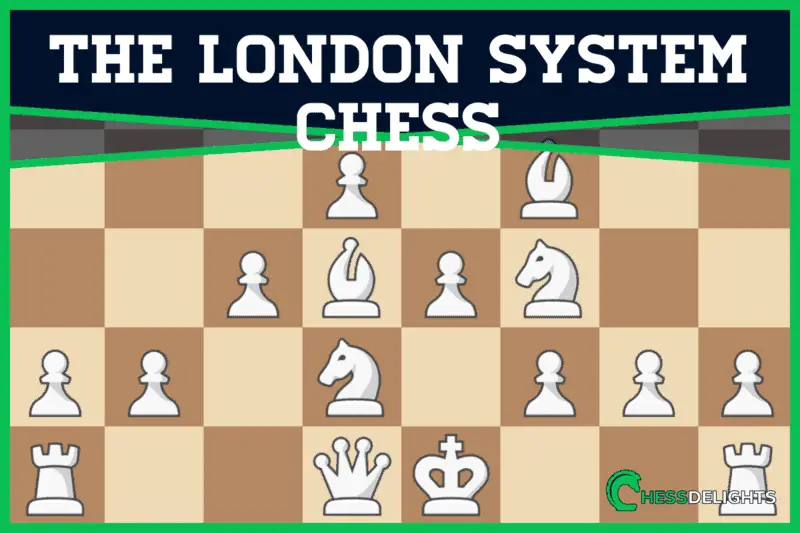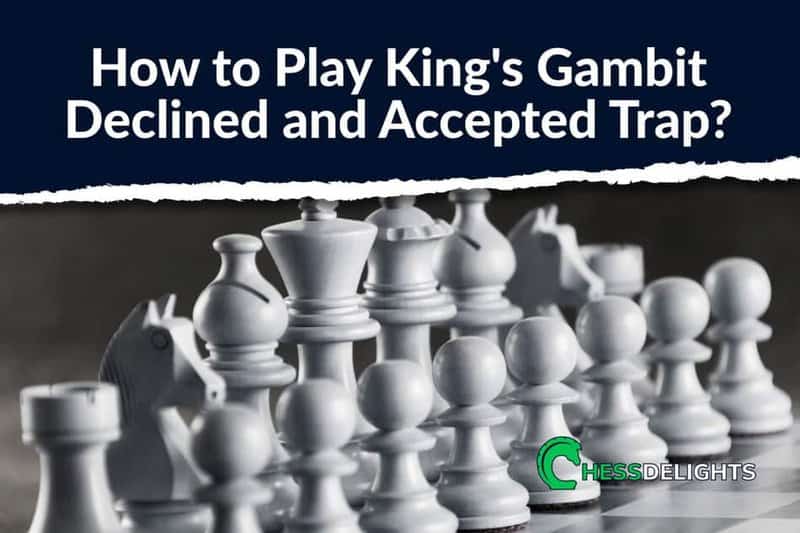The London system is a chess opening that can be used to counter any black opening. It can be very frustrating if you memorize a white opening line and black moves an opening line that is unknown to you.
If you've only read one variation of a chess opening, this is likely to happen. But you can play the London System virtually with any opening line from black.
Since I first learned about the different variations of the London system, it has been my go-to chess opening when playing online chess.
In this article, you'll learn about the London system, its various variations, and what I learnt from online chess courses and chess books I read.
Table of Contents
Interesting origin of the London System
It was mentioned in the book of Marcus Schmuecker “The London-System” that James Mason invented the London System because he had experimented with Bishop to f4 before his game against Blackburne.
The name London System was adopted because the system was played regularly in London.
Even in Wikipedia the origin of the London System is directly associated with James Mason, because he was the first well-known proponent of the opening.
Source: https://en.wikipedia.org/wiki/London_System
There's also this 1922 London Tournament, where the majority of the games I looked at on chessgames.com used the Queen's Gambit or Queen's Pawn opening, which may have contributed to the London System's popularity at the time.
Jose Capablanca earned 13 points and won the tournament out of the 16 players who were invited.
Jose Capablanca is one of my favorite chess Grandmasters. That's why I'm a big fan of his Chess Fundamentals book, which is available as a download on my website.
Recommended Reading: If you want to learn about advanced chess strategies, read this guide.
What is the London system position?
The basic setup of the London system is seen below, and it's obvious that the main goal is to control the black squares, especially the e5 square.
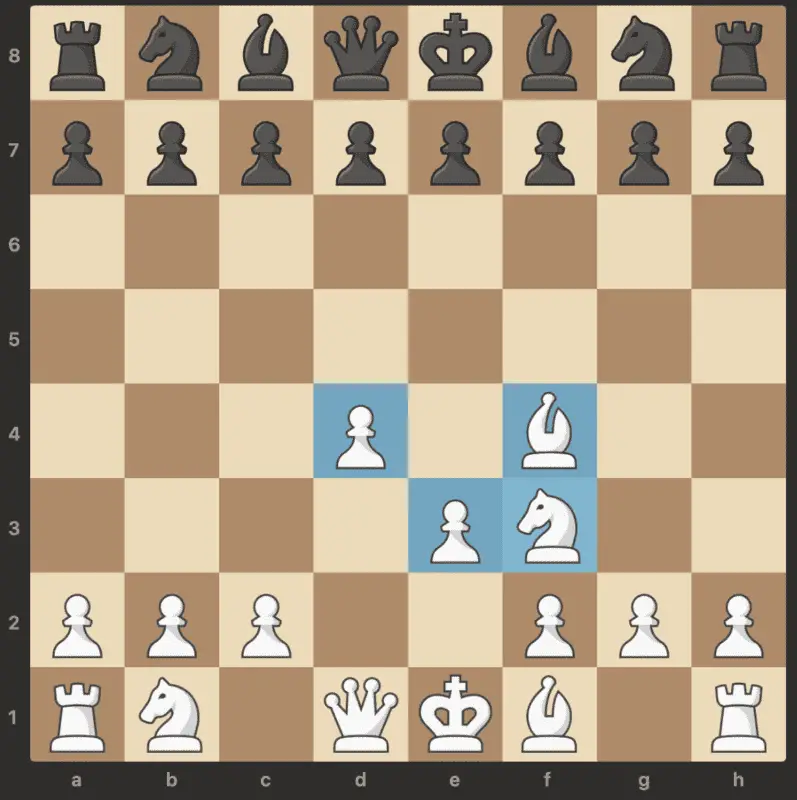
The moves pawn to d4, Bishop to f4, pawn to e3, and Knight to f3 make up the London System.
You'll also notice that White's dark squared Bishop is nicely positioned outside of the pawn chain, which effectively eliminates the problem of having a poor dark squared Bishop.
The London system is regarded as a robust opening since it focuses a greater emphasis on achieving a favorable position than on learning more about its opening theories.
This is one of the simplest openings to learn, and it allows you to explore your own ideas into the system. We'll look at some different variations now that you know the basic setup.
London system variations
Although the London approach has several variations, it does not require memorizing or studying many opening theories.
I've seen and read a number of interesting variations that explain the ideal moves for various black responses against the London system.
And I discovered a common theme that makes the London system work for players who aren't interested in learning a lot of theory.
The aim is to play according to a quiet scheme and then see how your opponent responds.
I'll show you how to play different variations that can be used to set up traps and attacks.
- Pawn double attack
- The exchange trap
- Knight double attack
- Queen trap
- Forced double attack
- Bishop h7 checkmate trap
1. Pawn double attack
When you look at the London System's setup, you might think you don't have any sharp moves you can make right away.
The e5 square is a key square in the London system in the setup below.

White may create pressure simply by moving its Knight to the e5 square, and black cannot allow the Knight to control that powerful square.
Furthermore, black cannot capture the Knight with Ne5 since white can recapture with pawn and double attack black at this position.
This is a variation that has the potential to give you a material advantage over black.
2. The exchange trap
As I said before, the e5 square is critical, and in the exchange trap for the London system, you must be able to anticipate Black's Queen's move.
If Black attempts to move its pawn to the e5 square (as shown in the image below), you can now use the trap.
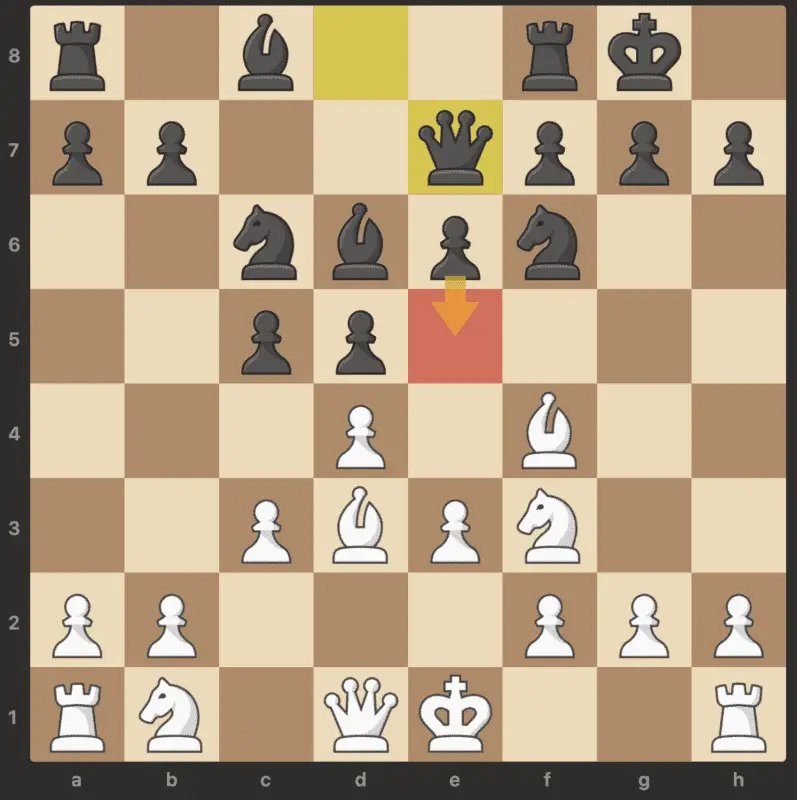
White will now put pressure on the opponent by moving its Knight to the critical e5 square (see image below). This is where the trap will begin.
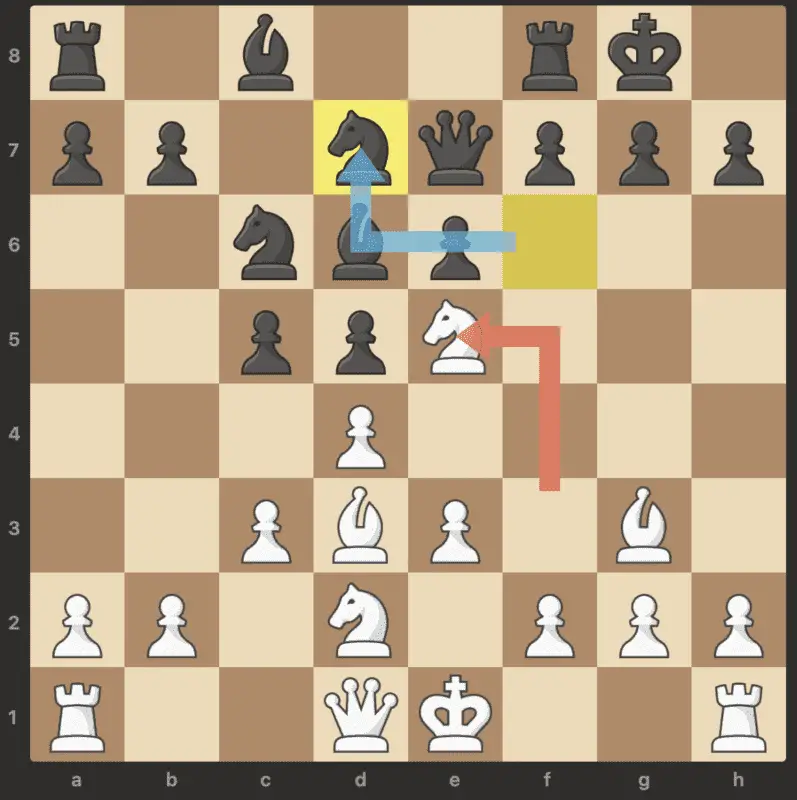
Following the exchanges, white will crush Black by capturing the h7 pawn. This may appear to be a shocking move, but it is not!
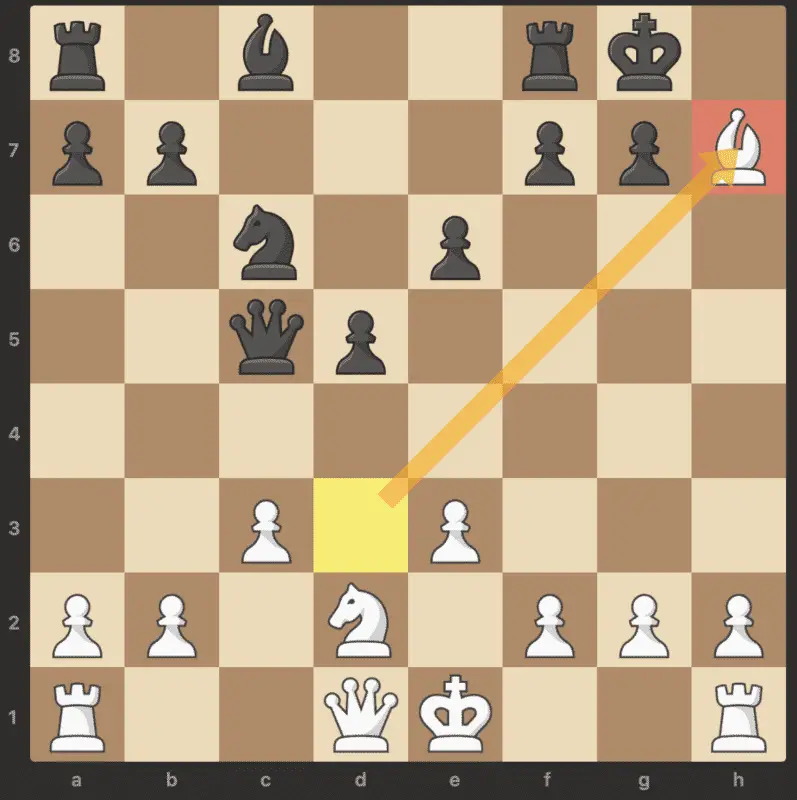
White's continuation will be excellent if the Black King takes the Bishop and White then moves its Queen to h5 check!
While it may appear as though you lack a solid continuation, you have the advantage by moving your Knight to e4. After Black's Queen move, you now have a two-move checkmate available!
This variation makes use of exchanges and sacrifices to win the game decisively.
3. Knight double attack

In this variation, instead of the move pawn to c3, you will move the Knight instead.
If Black continues with pawn to d5, your best move is Knight to b5, creating a threat on c7 to check the King and attack the Rook.
Magnus Carlsen, the World Chess Champion, also used the Knight to b5 move in one of his online games under a different name. Magnus Carlsen is among the Grandmasters who likes playing in live tournaments using the London system.
4. Queen trap
The Black Queen can take advantage of your weakened b2 pawn because of the Bishop to f4 move in the London System (see image below).
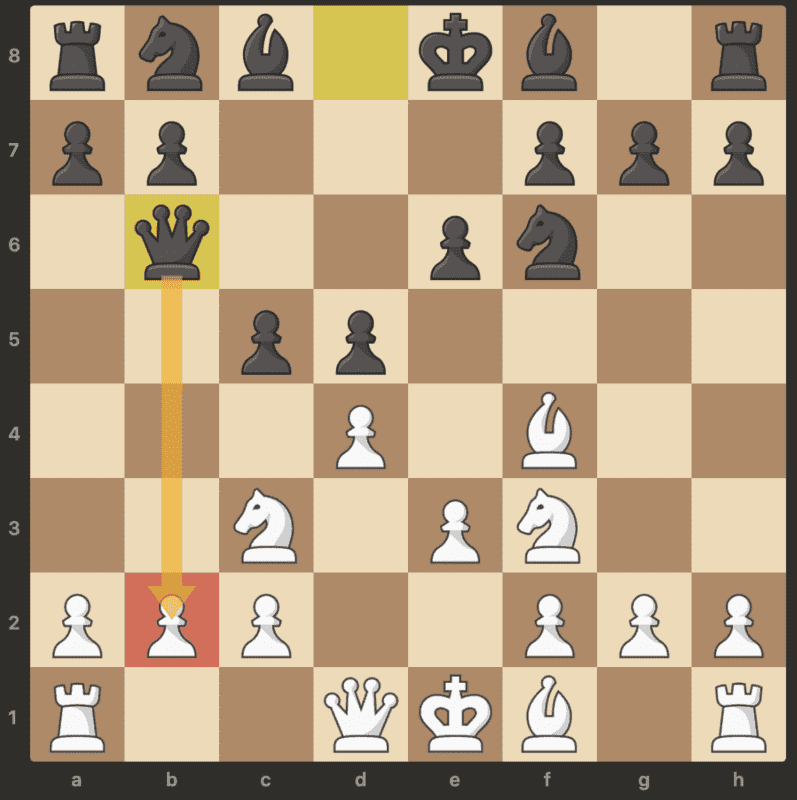
But what Black does not know is that you can set up a Queen trap if Black attempts to capture the b2 pawn.
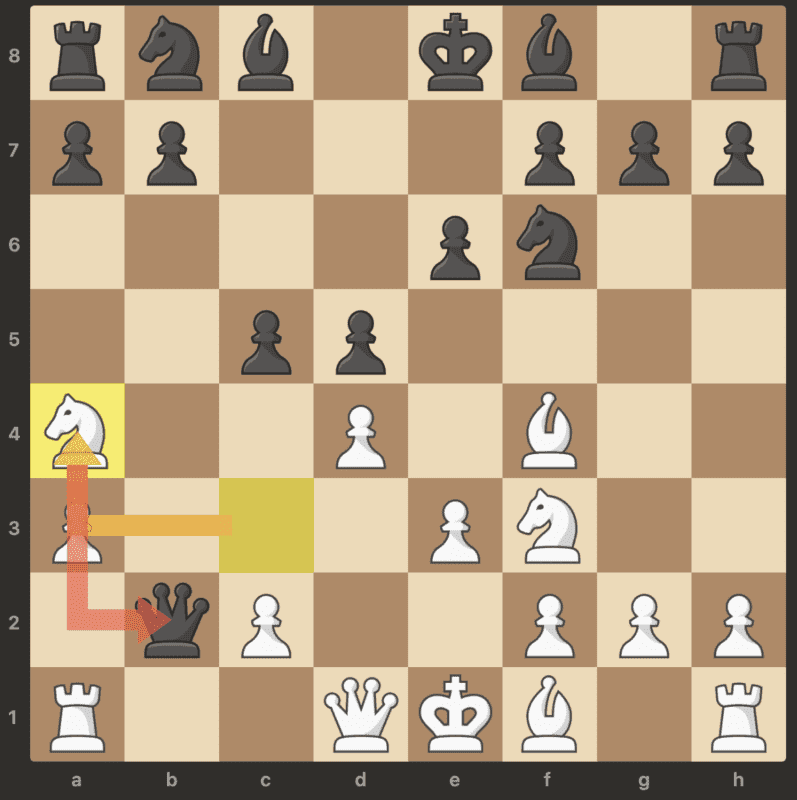
The Queen trap starts when you seem to neglect the attack of the Black Queen, and moved your pawn to a3.
If Black missed the trap, you can now move your Knight to a4 attacking the Queen.
This variation is an excellent trap when black attempts to move its Queen in the b6 square.
5. Forced double attack
Allowing black to capture the b2 pawn and advancing your Knight to the c3 square also results in a force double attack.
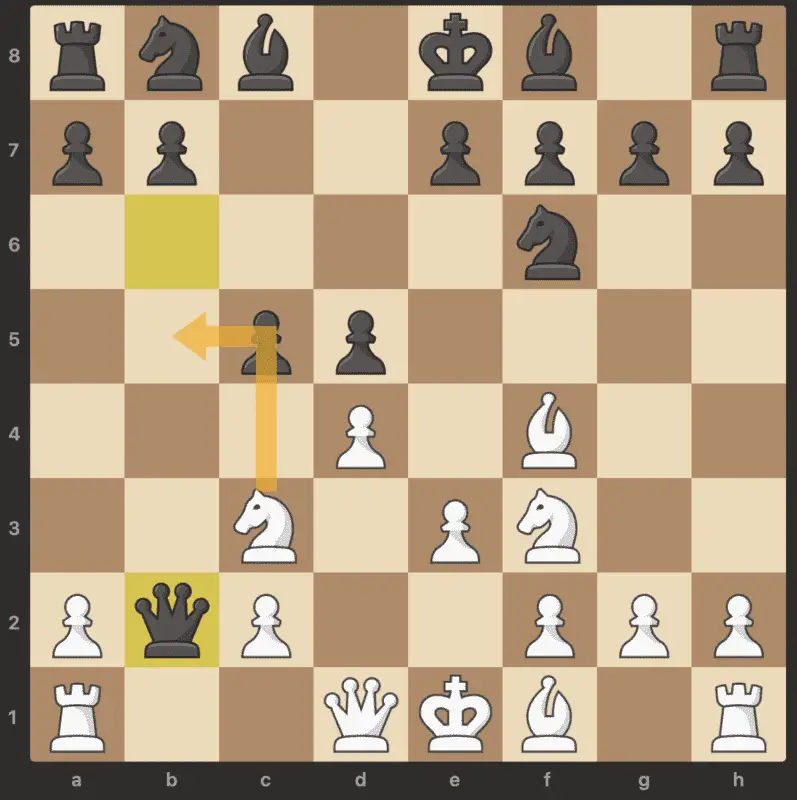
If Black answers with a Knight to a6, you can continue with Rook to b1 square, forcing the Black Queen to capture the a2 pawn.
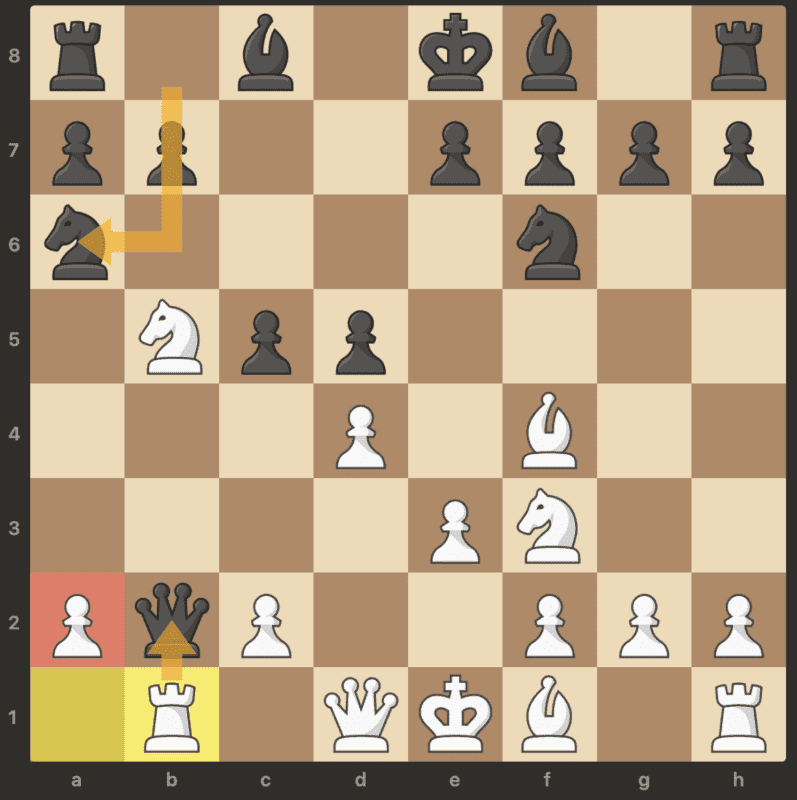
Following that, you'll attack the Queen with your Rook to the a1 square, forcing the Queen back to the b2 square. At this position, you'll capture the Knight on the a6 square, removing the defender of the c7 square.
You can now double attack Black. By advancing your Knight to the c7 square, checking the King, and attacking the Rook,
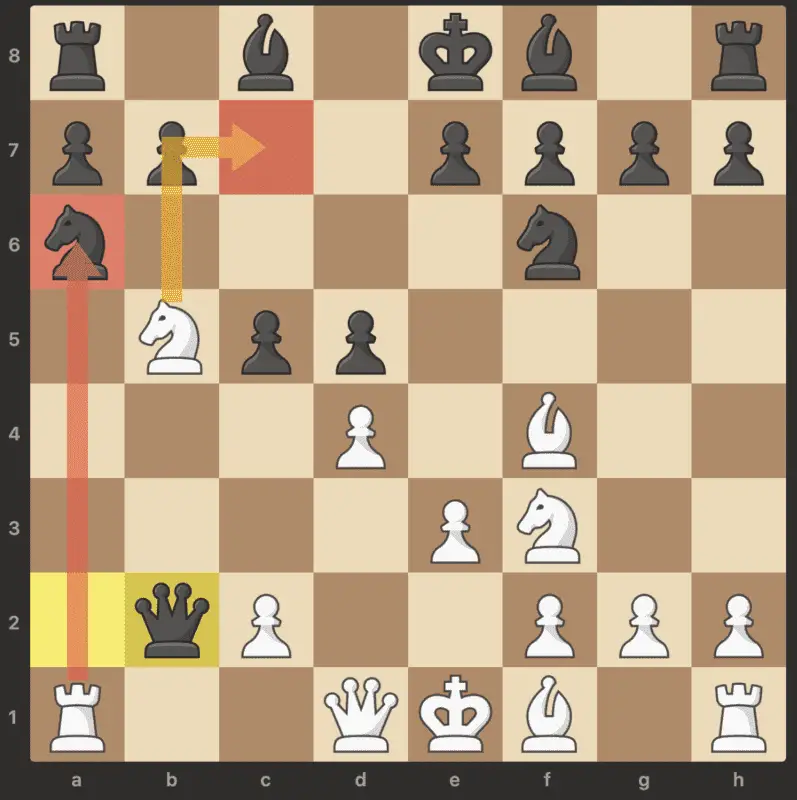
Additionally, in this variation, you can continue the threat of a double attack by moving your Knight to the g5 square.
A truly razor-sharp move that completely destroys your opponent with double attacks!
6. Bishop h7 Checkmate trap
This is the final trap on the list, but it is the most exciting for me since it requires you to sacrifice your Bishop to proceed with the checkmate trap.
Once you reach the similar position as in the previous variations when you move your Knight to the critical square on e5,
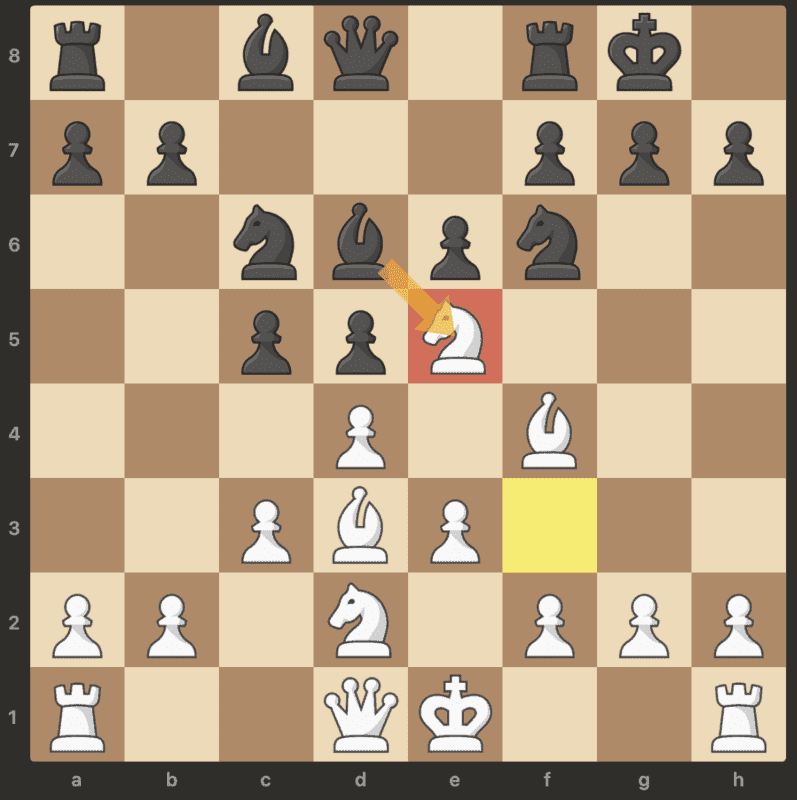
And if Black decides to exchange its Bishop for your Knight and attempts to attack your pawn with three attackers, your next move should be to position your other Knight on the f3 square.

Pretending to defend your pawn on the e5 square, but actually, you intend to capture the h7 pawn to set up the Bishop checkmate trap.
This move is followed by a check of the Queen, which results in a checkmate after six moves.
This is a significant variation to study, all the more so because Black cannot prevent the checkmate.
How do you play against the London System as Black?
White capturing the pawn on h7 is the most devastating move in the London System. Bishop Fianchetto, on the other hand, is a strong defense that black can use against the London system.
Knowing that h7 is a target of the London system, we also know that one of the best variations (Bishop h7 checkmate trap) includes Bishop constantly targeting the h7 pawn.
However, by blocking the diagonal of the light-squared Bishop (see image below), you prevent a potential threat once you castle on the Kingside.
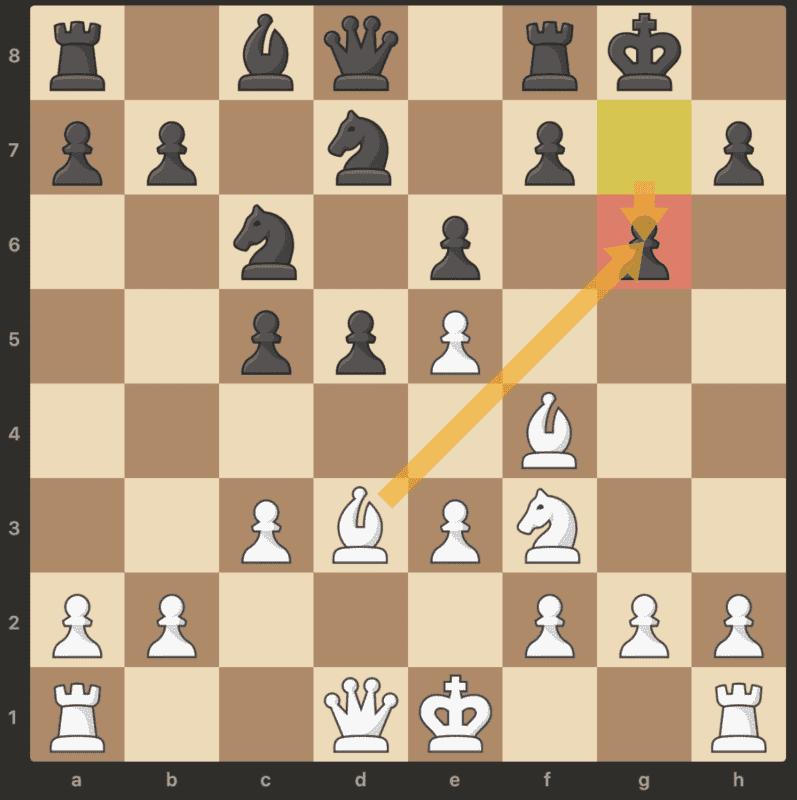
Carrying out the Fianchetto establishes a solid defense on your Kingside, allowing you to concentrate on attacking the center and having a great game.
Advantages of using the London System in Chess
- It is a system that is flexible enough to handle any black defenses.
- It is a system that can be easily learned and used by beginners.
- The London System can help improve players' tactical skills.
- The London System has a solid pawn structure
Important moves according to The Agile London System
If you've been studying several chess openings such as the Ruy Lopez, the Queen's Gambit, and the King's Gambit. You'll note that each of them has specific moves that you must master in order to play successfully.
There are three moves in The Agile London System book that stick out to me, especially when preparing for many variations that you may encounter.
- The Bishop to d3
- The Knight to d2
- The Queen to e2
1. The Bishop to d3
The Bishop to d3 is one of my favorite moves in The London System because it attacks Black's h7 pawn directly.
When your Bishop is on d3, you can set up a decisive attack on the Black King, and you'll almost probably still win.
2. The Knight to d2
The Knight to d2 is another decisive move in the London System because the Knight is flexible in the position.
As you can see from the many variations of “double attacks,” having your Knight on d2 can be developed further into an attack on the Kingside or Queenside.
3. The Queen to e2
The Queen in the London System’s ideal position for the Queen is on e2 or b3 square.
The sole exception is that you should avoid putting your Queen on the c2 square, as it is your Bishop's best retreat position on d3.
Famous chess players who played the London System
Magnus Carlsen, the World Chess Champion, is the most well-known chess player who used the London System.
- 2019 World Rapid & Blitz Chess Championship, Magnus Carlsen played the London System against GM Viktor Laznicka.
- Alexander Alekhine also played the London System (1922).
- An exhibition game in Sao Paolo, Brazil, Garry Kasparov used the London System.
Wrapping Up
Master the variations above and you'll have success winning games in tournaments with the London System.
I recommend books like The Agile London System, and also don't forget to check out useful resources on our website.
Recommended reading: If you want to learn about popular chess openings to memorize, read this article.

